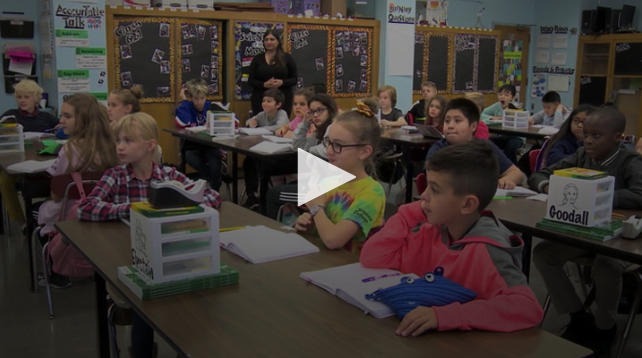Brett Bigham supports teachers in differentiating their instruction. In this blog, he unpacks a poster project to identify multiple learning pathways and celebrates the ideas shared by educator Sabrina Van-Phanz.
I am a HUGE fan of students creating the art and decorations in a classroom, and any subject you teach can lead to a great classroom poster. I love how Ms. Van-Phanz has thought bigger than an 8.5-11’’ page of paper!

Use Posters to Encourage Collaborative Thinking
Ms. Van-Phanz creates an opportunity to adapt a regular assignment, so that students, who are developing their writing, can express themselves differently . One adaptation is having students draw out a map (either by hand or digitally) as a companion for their written poster. This gives a handy two-sided project with drawing on one side and writing on the other.
Quite often I recommend drawing out writing assignments for those who cannot write, but it’s important to be aware this strategy does, however, come with its own issues that can frustrate students. The simple truth is this, if a student is significantly behind with their writing skills, their eye-hand coordination could be equally impacted, which stresses the importance of adapting your lesson. It might not be enough to offer one or two levels of the same work for students. You might have to adapt your lesson to provide multiple entry points from the median.
When I look at the writing required for Ms Van-Phanz’s posters I believe many of my students would not be able to participate at that level. As such, I recommend using collage work to create multiple entry points for engagement.
Collages can be extremely thought-provoking and can reduce anxiety associated with writing or drawing well. The collage is, in many ways, a tool for teachers to level the playing field. Done well, collages can also make awesome classroom decorations and I’m a firm believer that if students help decorate the classroom, they feel it is their space. Consider a mid-year classroom redesign or makeover!
Additionally, for this classroom assignment, I would assign a map-making segment where students would create a map of the park. I would give the assignment to students who would be challenged by labeling a map, but who could do most of the work independently. Depending on interest, I’d allow students the chance to create the map on the computer or draw it out by hand.
For students who don’t write, or need more basic vocabulary, I looked at what Ms. Van-Phanz presented and saw the relationship she was drawing between the park and what animals you would see when you visit. This is a perfect chance for you to assign a collage to students who are non-readers. They can easily download, cut out or draw pictures of the animals from their list.
And finally, because teachers don’t always adapt everything, sometimes we need to occupy our dreamers and bigger thinkers! I’ve created a free downloadable activity for your students to draw their dream park!
A very special thank you to PNG ING for sharing so many fun animal pictures for people to use free of charge. I highly recommend their squirrel section for all of your squirrel needs!






